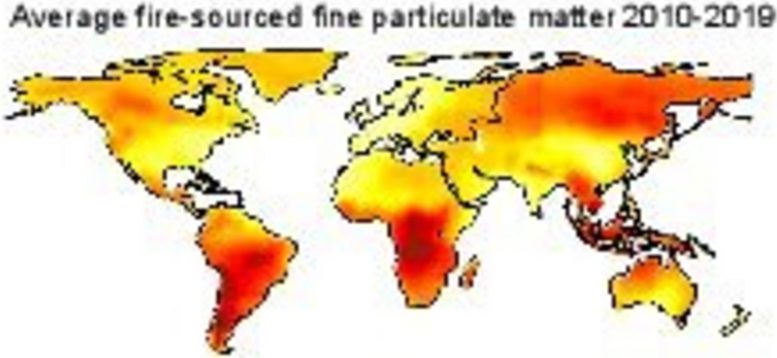A study, the first of its kind, analyzed the global rise in pollution from landscape fires over two decades and discovered that over 2 billion people experience at least one day of health-related environmental risks yearly, with this figure growing by 6.8% in the last decade. The research found increased exposure rates, especially in low-income nations, and emphasized the broad health impacts of fire-sourced pollution. The recent uptick in landscape fires due to climate change, like those in Canada, underscores the study’s significance, highlighting the need for robust monitoring and preventive strategies.
Study reveals that 2 billion individuals experienced at least one day of potentially health-impacting wildfire smoke.
The world’s first study examining the rise in pollution from landscape fires globally over the past two decades has found that over 2 billion people are exposed to at least one day of health-impacting environmental hazards each year.
This figure has grown by 6.8 percent over the last ten years.
Health Impacts and Global Reach
The research highlights the severity and extent of pollution stemming from landscape fires and the heightened impact on the global population, consequently leading to increased public health risks.
Average source fine particulate matter 2010-2019. Credit: Monash University
Fire-sourced air pollution can cause numerous adverse health effects, such as elevated mortality and morbidity rates and a worldwide deterioration of cardiorespiratory health and mental well-being.
Study Findings
Published in Nature and spearheaded by Australian researchers, the study evaluated global daily air pollution from fires between 2000 and 2019.
It discovered that each year, 2.18 billion individuals encountered at least one day of significant landscape fire air pollution.
On average, every person globally experienced 9.9 days of such exposure annually, marking a 2.1 percent rise over the past decade. Notably, exposure levels in low-income nations were approximately four times higher than in affluent countries.
Geographical Disparities
Led by Professors Yuming Guo and Shanshan Li, from Monash University’s School of Population Health and Preventive Medicine, the study also found that the exposure levels of PM2.5 were particularly high in Central Africa, Southeast Asia, South America, and Siberia.
Professor Yuming Guo. Credit: Monash University
The study also looked at global landscape fire-sourced ozone, an important fire-related pollutant that has only been estimated for the United States.
Fire Definitions and Methodology
In the study, landscape fires refer to any fires burning in natural and cultural landscapes, e.g. natural and planted forests, shrubs, grass, pastures, agricultural lands, and peri-urban areas, including both planned or controlled fires (e.g., prescribed burns, agricultural fires) and wildfires (defined as uncontrolled or unplanned fires burning in wildland vegetation).
The comprehensive assessment of the global population’s exposures to fire-sourced PM2.5 and ozone during 2000-2019 was calculated using a machine learning approach with inputs from chemical transport models, ground-based monitoring stations, and gridded weather data.
Context and Concerns
The recent pollution from the Canadian wildfires that spread smoke across North America highlighted the increase in severity and frequency of landscape fires due to climate change.
According to Professor Guo, no study to date has looked at the long-range effect of this increase in landscape fires globally and wildfires often impact remote areas where there are few or no air quality monitoring stations. In addition, in many low-income countries, there are no air quality monitoring stations even in urban areas.
“The exposure to air pollution caused by landscape fire smoke traveling hundreds and sometimes even thousands of kilometers can affect much larger populations, and cause much larger public health risks,” he said.
“Mapping and tracking the population exposure to landscape fire-sourced air pollution are essential for monitoring and managing its health impacts, implementing targeted prevention and interventions, and strengthening arguments for mitigation of climate change.”
Reference: “Global population exposure to landscape fire air pollution from 2000 to 2019” by Rongbin Xu, Tingting Ye, Xu Yue, Zhengyu Yang, Wenhua Yu, Yiwen Zhang, Michelle L. Bell, Lidia Morawska, Pei Yu, Yuxi Zhang, Yao Wu, Yanming Liu, Fay Johnston, Yadong Lei, Michael J. Abramson, Yuming Guo and Shanshan Li, 20 September 2023, Nature.
DOI: 10.1038/s41586-023-06398-6
>>> Read full article>>>
Copyright for syndicated content belongs to the linked Source : SciTechDaily – https://scitechdaily.com/first-of-its-kind-global-smoke-pollution-study-uncovers-alarming-results/


































